Your HBR New School of Marketing Cheat Sheet
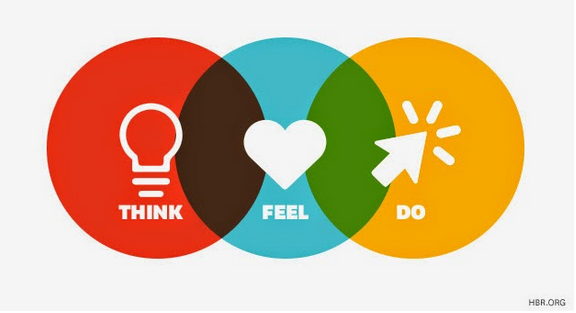
Posted By Sue Parente on August 13, 2014
Feeling sheepish, Mr./Ms. Marketer, about not having yet read this month’s Harvard Business Review cover story on the New Basics of Marketing? Well, we’ve got your back, with key points to safely tide you over until you have a chance to peruse it for yourself.
The HBR editors break the subject down into four "how-to" articles aimed at helping marketers finally cross that chasm from old school to new school marketing.
THINK: Excelling in the Digital Age
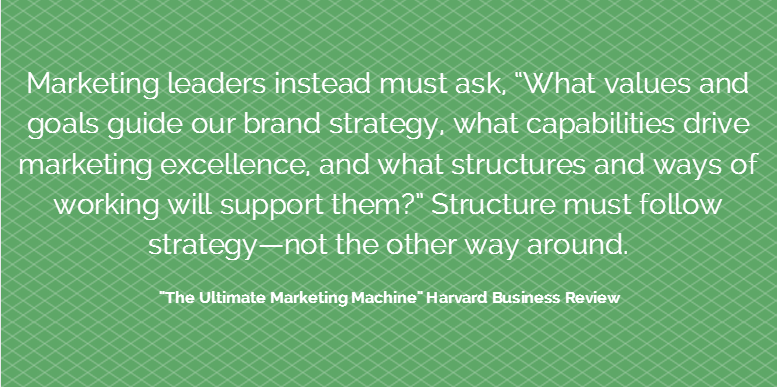
This first article, "The Ultimate Marketing Machine," is the collaboration of EffectiveBrands' Marc de Swaan Arons and Frank van den Driest and Unilever's Keith Weed, who base their argument in large part on the findings of a vast global study of marketers called Marketing2020.
The authors' perspective is that for all of our adoption of "new" digital media, most of marketing looks and thinks pretty much the way it did 40 years ago. Even the marketers who know they need to change struggle with how to do it. So, to get to the bottom of what strategies, structures and capabilities work best, the Marketing2020 study looked at the differences between high-performing marketing groups and low-performing marketing groups, leading to the following conclusions:
- Use data to drive insights. High performers do a better job of leveraging data to drive insights (example: Nike+ suite of personal fitness products)
- Have a purpose to your positioning. High performers excel at communicating brand purpose at the functional, emotional and societal level (example: Unilever's Sustainable Living Plan)
- Create a total experience. High performers don't just market to customers, they create customer experiences (example: spice maker McCormick's FlavorPrint program that learns customers' taste preferences and makes recommendations).
- Extend beyond marketing. High performers think and act holistically by:
- Connecting marketing across functions throughout the company
- Inspiring the entire organization to take up marketing's cause and brand purpose
- Focusing their strategy so local and global marketing groups are aligned
- Ditching the old "Christmas tree" org chart in favor of more networked organizations that use cross-functional teams or taskforces to be more flexible and agile.
The piece went on to say that, according to the Marketing2020 study, only half of the high-performing groups excelled in some of these points. So while there's still a mountain of work to be done, it's not too late for your organization to make these changes and emerge as a high-performing leader in your market.
FEEL: Connecting with Your Customer on Their Terms
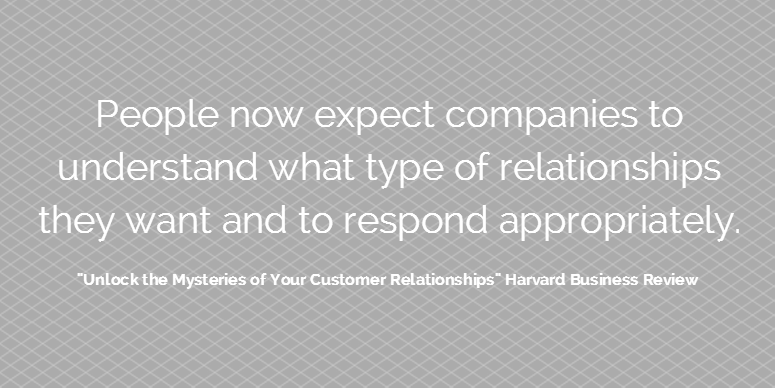
A separate article, "Unlock the Mysteries of Your Customer Relationships," asks us to look at customer engagements the same way we look at relationships in our personal life. The three authors of this piece, Harvard Business School's Jill Avery, Boston University's Susan Fournier and GfK's John Wittenbraker, believe that most consumer-facing companies fail to understand the nuances of the relationships they have with their customers and how personal and emotional in nature they can be. For instance, some customers might see themselves as a friend of the brand, only to be treated as a mere commercial transaction. These discrepancies create unnecessary and counter-productive discord between the consumer and the company.
To fix the problem, companies need to do a better job of gathering intelligence on the kind of relationship the customer wants to have with their brand and do what it can to nurture and improve on that relationship. According to the authors, there are as many as 29 different types of consumer/brand relationships, both positive and negative, ranging from "buddies," "close siblings" or "marriage partners" of the brand to "ex-friends," "flings," or "total strangers." Each relationship type follows its own set of unspoken rules, which are derived from the customer's expectations and if broken, can negatively impact the relationship. For example, if a customer is expecting to only have a fleeting relationship with a brand (a fling), bombarding them with surveys and special offers would be a violation of that relationship (asking for too much of a commitment) and more than likely act as a turn off, sending them running in the wrong direction.
Instead, the article points out, marketers need to look at relationships as long-term assets and reorganize their programs and capabilities around the different types of relationship personas. When marketers learn to apply "data-driven empathy" for their customers, better understanding the customer's needs and wants, it can then act as credible and more satisfying relationship partners.
DO: Deciding to Make a Good Decision
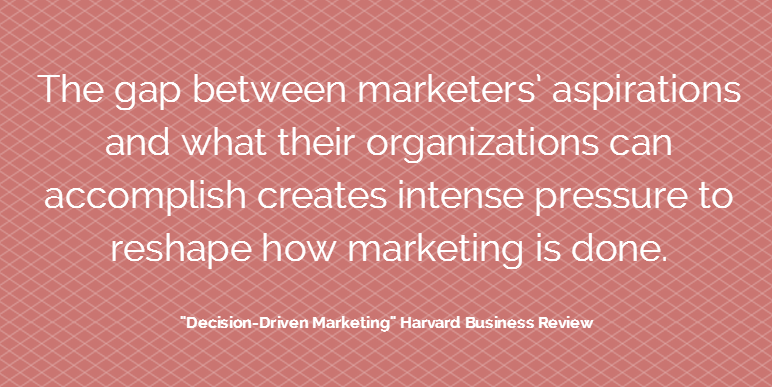
A third article in the cover series, "Decision-Driven Marketing," focuses on how marketers can make better decisions. In this piece, Bain & Company's Aditya Joshi and Eduardo Giménez argue that for modern marketers to be successful, they increasingly need the cooperation and support of other corporate functions. But the problem is current structural constraints typically prevent effective collaboration and cooperation from taking place. The cutting-edge companies, they say, are solving this problem by improving decision-making functions "at the seams;" the seams are the boundaries that exist between marketing and the other core corporate functions, such as corporate leadership, IT, sales, finance, etc.
According to Joshi and Giménez, there are three types of decisions that typically cross the seams between marketing and the other corporate functions:
- Strategy and planning (C-suite)
- Execution (Product and Sales)
- Operations and infrastructure (IT, Finance)
The devilish issues emerge when there is a lack of clarity around roles and responsibilities in these cross-functional decisions. The Bain authors suggest a tool called RAPID to help clearly assign roles for key decisions. It identifies who is needed to provide input, make recommendations, agree on the recommendations, ultimately make the decision (or what they call "the person with the D") and then perform the task. They offer some compelling examples of ways Nordstrom and Target have improved decision making at the seams to make improvements faster and more effectively.
DO: New Hybrid Marketing Execs Bring Critical Marketing Functions Together
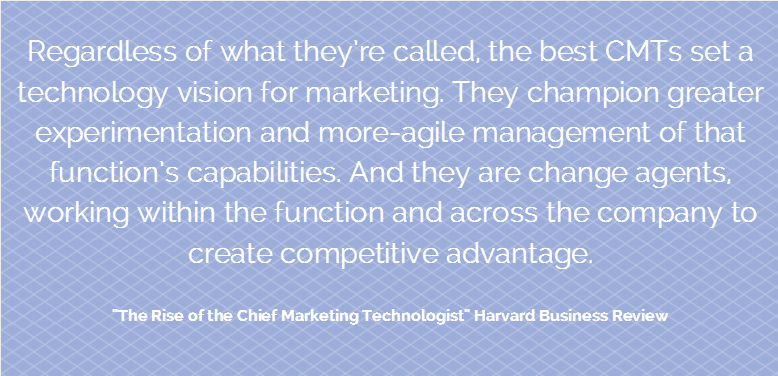
The final article in the series is penned by our favorite martech guru Ion Interactive's Scott Brinker and Gartner Research VP Laura McLellan, "The Rise of the Chief Marketing Technologist."
Given marketing's growing dependence on technology to engage customers and the corresponding growth in digital spend, it seemed only a matter of time for the marketing and technology executive roles to fuse in some way. Collaboration between the CMO and CIO simply isn't sufficient to bridge the gaps between the marketing and technology groups within most companies. So whether they are called chief marketing technologists (CMTs) or heads of marketing technology or something else altogether, Brinker and McLellan tell us there is a new role emerging to better align marketing technology with business goals.
The best of these CMTs promote experimentation and agile management and act as change agents to create competitive advantage. They sit at the intersection of four major groups – the CMO/marketing executives, the CIO/IT executives, the broader marketing team and the technology vendors -- to ensure goals, strategy and support remain aligned. According to the authors, organizations with CMT-type leaders are more advanced than their peers when it comes to digital marketing and innovation and spend more of their marketing budget on these functions.
The Big Takeaway: New Doesn't Have to Mean Scary
What I find so valuable about this issue is that it provides specific, actionable advice on how to think about and structure your marketing organization for future success. It puts things we've all been talking about for years, like Big Data, cross-functional cooperation and relationship marketing, into clear focus for application purposes in our current digital environment. It's a brave new world, but much less scary and undefined than you might think, thanks to the research and recommendations of folks like these HBR contributors.




